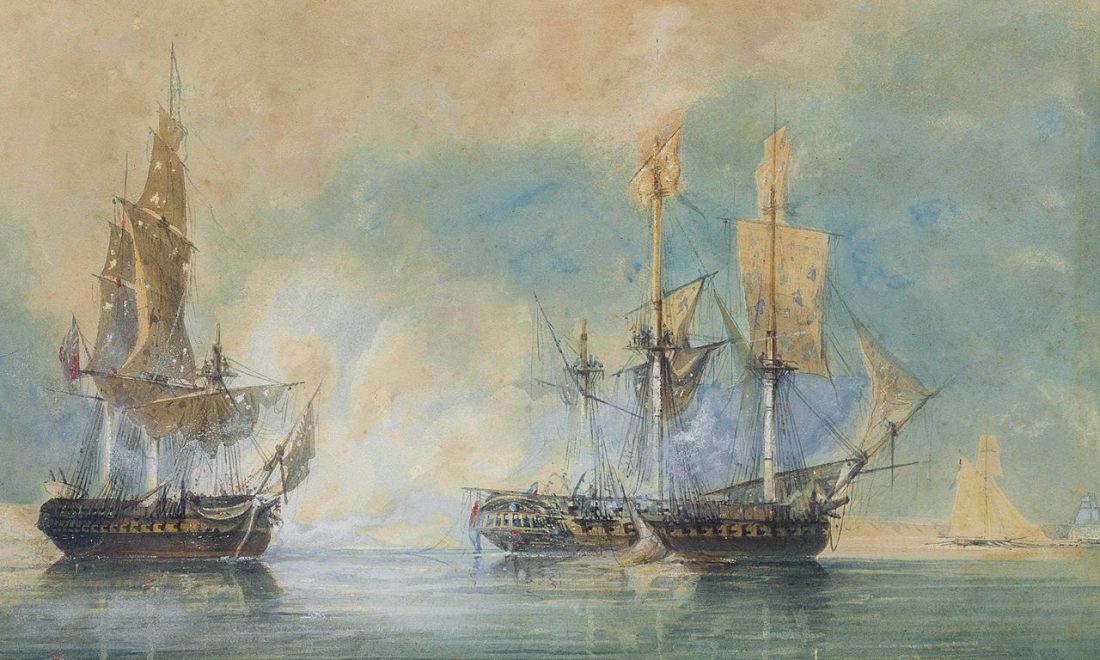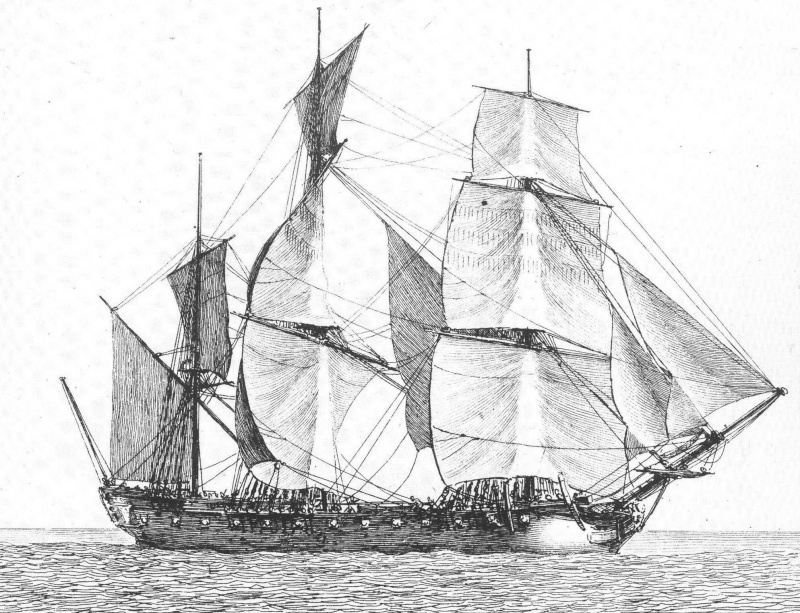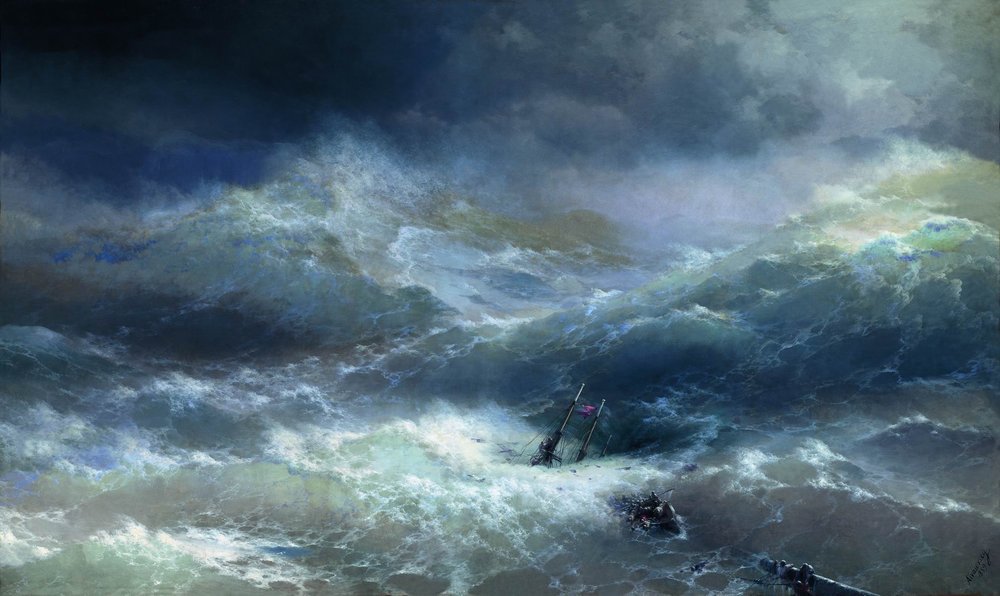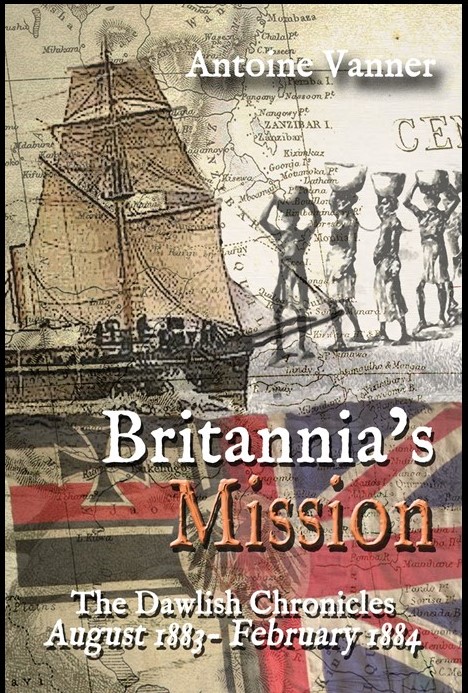Storm and Horror:
The Destruction of HMS Crescent, 1808
For most officers and men, storms represented a greater threat to life than enemy action throughout the Age of Fighting Sail. The loss of HMS Crescent, off the coast of Denmark in December 1808, is an appalling example of how a well-built wooden ship could be pounded to pieces on a lee shore, without hope of survival, in the years before steam power gave greater independence of wind and weather.
A 36-gun fifth-rate frigate launched in 1781, HMS Crescent has seen significant service in European, South African and West Indian waters. Her moment of glory had come on 20th October 1793 when she had fought a classic frigate to frigate duel with the French La Réunion off Cherbourg. The two-hour battle was ferocious, both ships losing sections of masts and rigging. HMS Crescent did manage however to retain enough manoeuvrability to allow her to be placed under La Réunion’s stern so as to rake her – the most effective tactic for inflicting massive damage on an enemy. The surrendered La Réunion was taken into the Royal Navy as HMS Reunion.

HMS Crescent’s day of glory, 20th October 1793. Crescent on left, La Réunion on right. Painting by John Christain Schetky (1778-1874)
In late 1808 HMS Crescent was headed for the Baltic (click here to see recent blog on operations there in this period) under command of Captain John Temple. She left Yarmouth, on England’s east coast, on 29th November. In the following days, initially favourable weather deteriorated to a gale from the southwest. At daylight, on 5th December, the coast of Norway was sighted to the north and the Danish region of Jutland lay south. In early afternoon soundings showed water-depth decreasing from twenty-five fathoms to thirteen in the space of two hours. Given the hazards of sailing in this hazardous area, HMS Crescent was carrying experienced pilots who allegedly knew it well. These now advised that they were familiar with the soundings and that in the present conditions the ship should be hove to with her head southwards and her topsails reefed until the weather should improve. HMS Crescent could then drift with safety in adequate water depth. This advice was immediately acted upon but the sounding nevertheless decreased to ten fathoms – still safe, but only if the depth would not lessen further.
The pilots were over-optimistic. HMS Crescent did indeed drift safely until 10 p.m. – and then she grounded. A boat was lowered immediately to sound the area and it reported that the current was running eastward – towards yet shallower water, at some two and a half knots. As set, the vessel’s sails were forcing the ship further on the shoal, so orders were given to furl them and to hoist out all the boats except the jolly-boat and gig. The current was now driving on HMS Crescent’s starboard bow and in an effort to draw her off the sails were loosed again. This proved led her to be canted over on one side. There was nothing for it now but to haul the vessel off by anchor. The sails were furled again and the launch, a large boat, took an anchor and cable on board. The other ship’s boats tried to tow the launch to a preferred position for dropping but the waves and current were too much for them. The anchor seems therefore to have been dropped short.

A typical frigate of the era – HMS Crescent would have looked generally similar in 1808
HMS Crescent’s situation was now desperate. The gale was yet stronger and veered round to the north-west, blowing direct onshore, forcing the vessel further on the shoal. As a last attempt to save her, Captain Temple directed that she be lightened by heaving the guns and shot overboard. As this was to no avail, the provisions followed. Badly battered, the hull was letting in water and pumping did not stop it rising to the hatches. Now the anchor cable parted and all hopes of saving the vessel were abandoned. It should be borne in mind that these desperate measures had gone on in darkness and wet cold.
At 6 a.m. on the 6th of December Captain Temple ordered the masts to be cut away. The boats which, until this time, had been lying astern on tow lines, broke their hawsers and the few men on board them found it impossible to get back to the ship due to the strong current. They made for the shore, and all succeeded reached it, with the exception of one of the cutters, which was lost with all her crew. In another boat, a Lieutenant Henry Stokes, fearing that she would be capsized, jumped overboard, and attempted to swim on shore, but was drowned in the attempt.
The storm worsened through the morning, and the men still on board the wrecked HMS Crescent were exhausted. They were nevertheless piped to breakfast and issued a tot of grog – it is amazing how, in such extreme conditions, formal procedures were still followed. Soon after noon, when it must have been obvious that the hull might soon break up entirely, construction of a raft commenced. It was ready by 2 p.m. and put under command of a Lieutenant of Marines and laden with the weakest of those still on HMS Crescent. It pushed off, but those on board found water washing over them to waist height and tearing seven of them away before the raft reached the Danish shore.

Few artists have ever conveyed the plight of a small boat in a stormy sea as well as Ivan Konstantinovich Aivazovsky (1817-1900)
A second raft was begun on the Crescent but could not be completed. Waves were now breaking across the decks and the tiny jolly-boat was the only means of escape. It could carry only a few – and its own chances of survival would be slim, but she was launched anyway. Captain Temple was now left behind with some two hundred others. These men must have known that there was no hope for them – their state of mind must have been dreadful. Soon after the departure of the jolly-boat, HMS Crescent broke up. Including Captain Temple, not a single person still on board survived – and these included six women. and a child. Of some two hundred and eighty on board, all but sixty had perished.
The surviving officers of HMS Crescent subsequently faced court-martial for the loss of the vessel. The court’s decision was damning for the master, stating that “the loss of the Crescent proceeded from the ignorance and neglect of the pilots, and that the master was blameable, inasmuch that he did not recommend to the captain or pilots either coming to an anchor, or standing on the other tact, for the better security of H.M. late ship Crescent.” The efforts of the survivors were commended however: “The court was further of opinion that every exertion was made on the part of the remaining officers and crew for the safety of the Crescent.”
Wind, wave and current had done for HMS Crescent what enemy broadsides had not achieved fifteen years before.
Britannia’s Mission
1883: The slave trade flourishes in the Indian Ocean, a profitable trail of death and misery leading from ravaged African villages to the insatiable markets of Arabia. Britain is committed to its suppression but now there is pressure for more vigorous action . . .
Two Arab sultanates on the East African coast control access to the interior. Britain is reluctant to occupy them but cannot afford to let any other European power do so either. But now the recently-established German Empire is showing interest in colonial expansion . . .
With instructions that can be disowned in case of failure, Captain Nicholas Dawlish must plunge into this imbroglio to defend British interests. He’ll be supported by the crews of his cruiser HMS Leonidas, and of a smaller warship. But it’s not going to be so straightforward . . .
Getting his fighting force up a shallow, fever-ridden river to the mission is only the beginning for Dawlish. Atrocities lie ahead, battles on land and in swamp also, and strange alliances must be made.
And the ultimate arbiters may be the guns of HMS Leonidas and those of her counterpart from the Imperial German Navy.
In Britannia’s Mission Nicholas Dawlish faces cunning, greed and limitless cruelty. Success will be elusive . . . and perhaps impossible.



